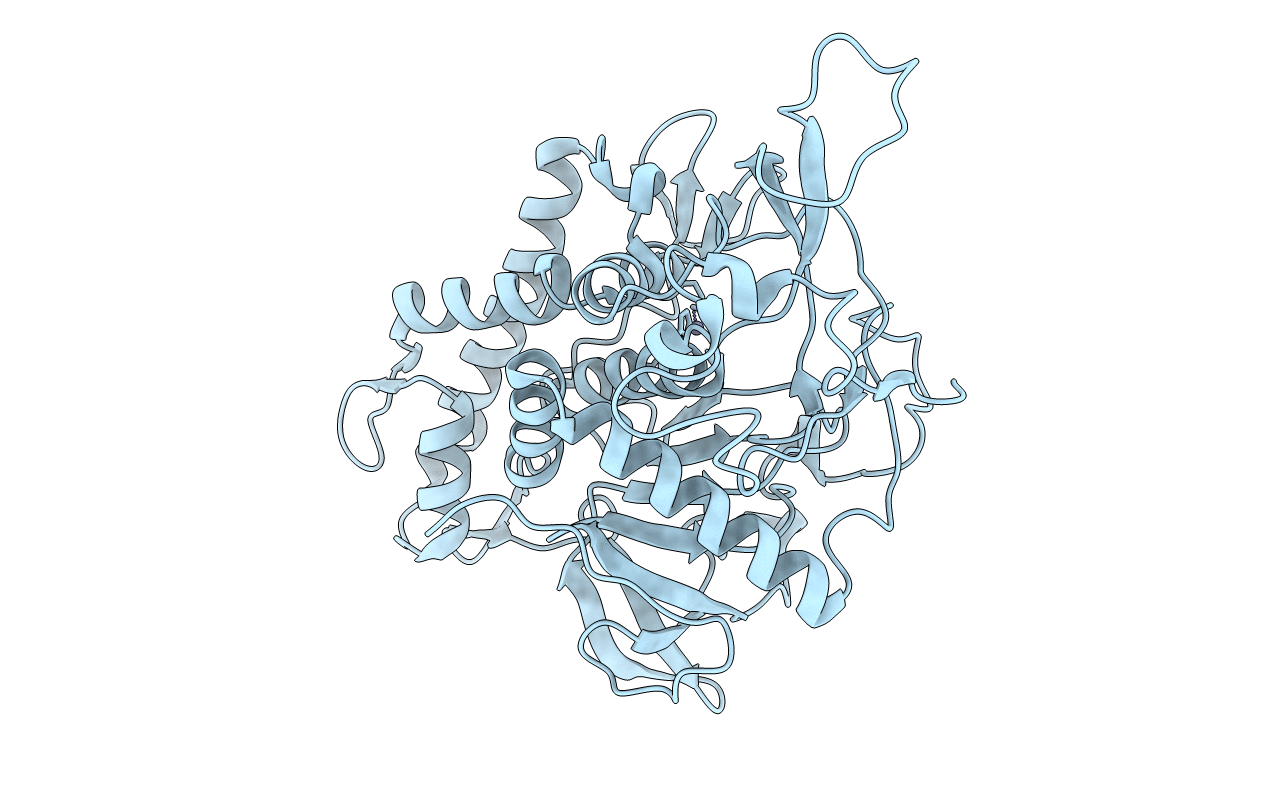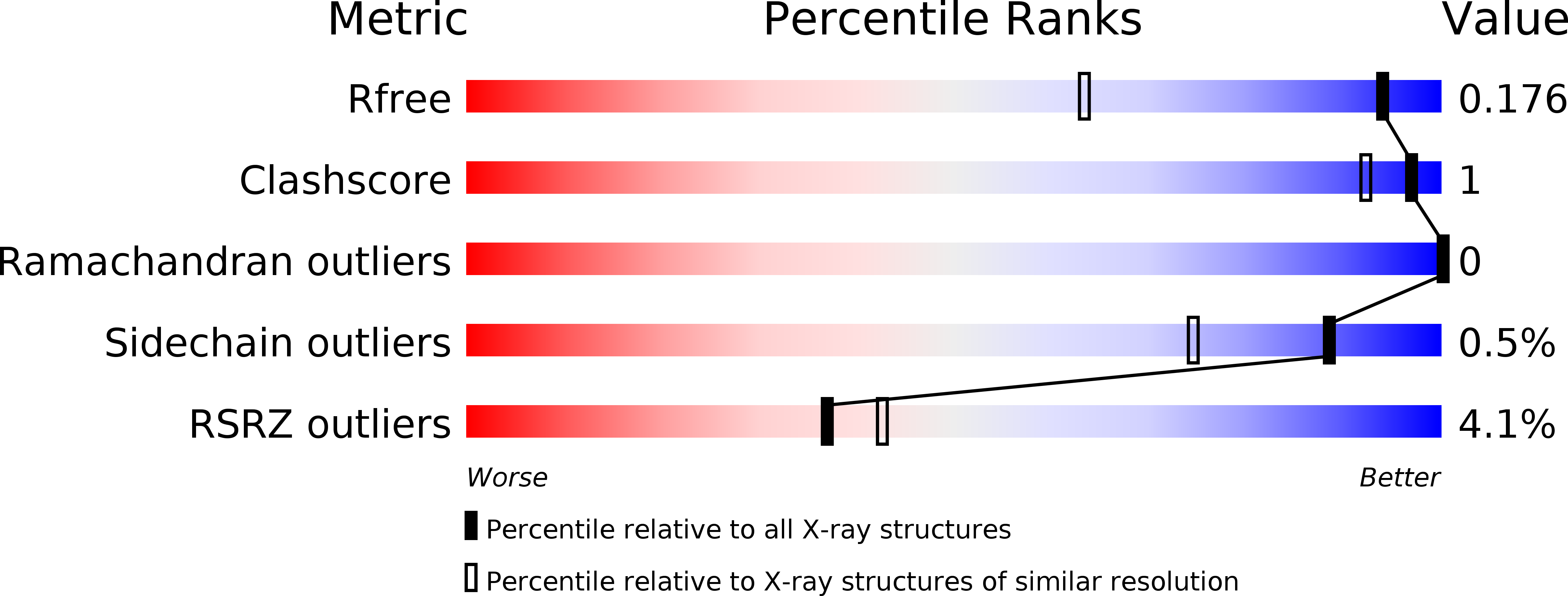
Deposition Date
2017-11-29
Release Date
2018-03-14
Last Version Date
2024-01-17
Entry Detail
PDB ID:
6F47
Keywords:
Title:
Crystal structure of the catalytic domain of botulinum neurotoxin X
Biological Source:
Source Organism:
Clostridium botulinum (Taxon ID: 1491)
Host Organism:
Method Details:
Experimental Method:
Resolution:
1.35 Å
R-Value Free:
0.17
R-Value Work:
0.14
R-Value Observed:
0.14
Space Group:
P 21 21 21


